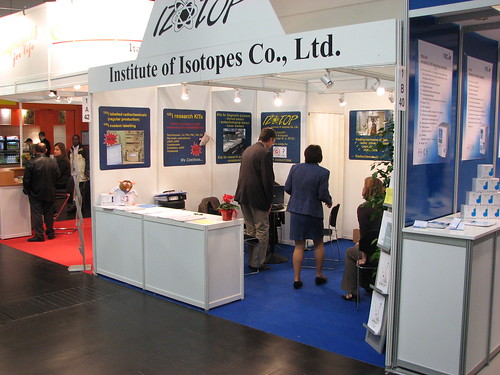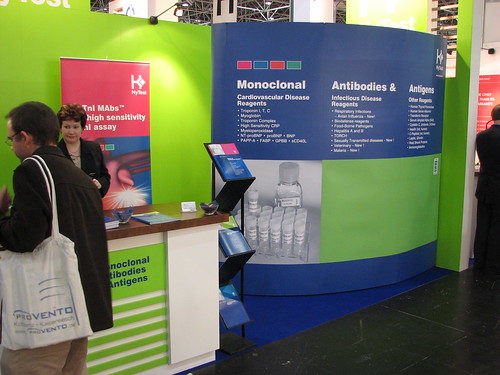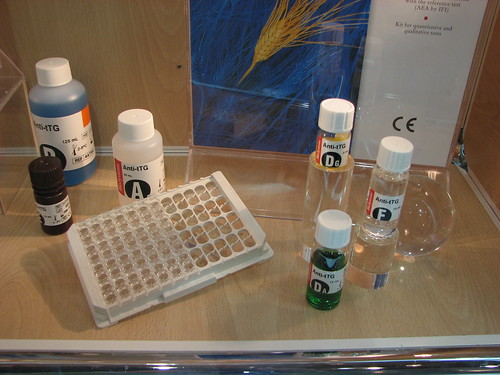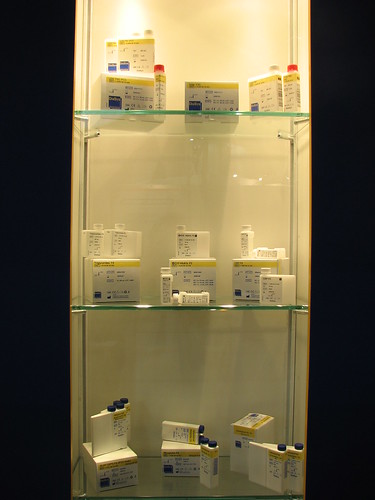At the Medical Museion, we have continuing discussion about how to handle the intangible (unhandable?) yet still material elements of recent biomedicine (genes, molecules, proteins, reagents etc.) in a museum setting. How to display what cannot be perceived? Sadly, my recent field trip to the Medica 2007 medical fair did not provide much in the way of an answer to this challenge.
Not that the intangibles of recent biomedicin were not represented at the fair. Dozens of companies advertise their product range of reagents for chemical analysis. And with the booming industry of ready-to-use lateral flow immunoassays, there is no shortage of antibody-producing companies either.
Yet how do these companies display their products? Well, as can be seen from the images below, most of the time they don’t.
At the Institute of Isotopes Co., products are only available as text or are given some kind of spaciality through posters showing the kind of analytical equipment they will be suitable for.

And the stand of HyTest Ltd., which produces immunological markers, also seemed very two-dimensional:

Other companies opted for another strategy, namely by focusing on the containers that allow us to handle the unhandable, or the technologies that interact with, say, antibodies to produce a diagnostic test. Several companies had presentations much like the one below, showing bottles bearing the name of the product (and possibly holding a sample of it?) and microtitre plates,

containers and packages,

or the technologies that work together with the product to produce a diagnostic test (fx strips, which for some reason I can’t find an image of!)
These exhibition strategies did little in terms of making the intangibles of biomedicine any more concrete to me, and they certainly convey very little about what this kind of products actually do and what they are. What they do is to ‘display’ the products through (some of) the containers and technologies that makes it possible for us to interact with them, to access and control the world of the infinitely small. But is it possible to go beyond this?
How to handle the unhandable: Strategies from Medica 2007
At the Medical Museion, we have continuing discussion about how to handle the intangible (unhandable?) yet still material elements of recent biomedicine (genes, molecules, proteins, reagents etc.) in a museum setting. How to display what cannot be perceived? Sadly, my recent field trip to the Medica 2007 medical fair did not provide much in the […]


